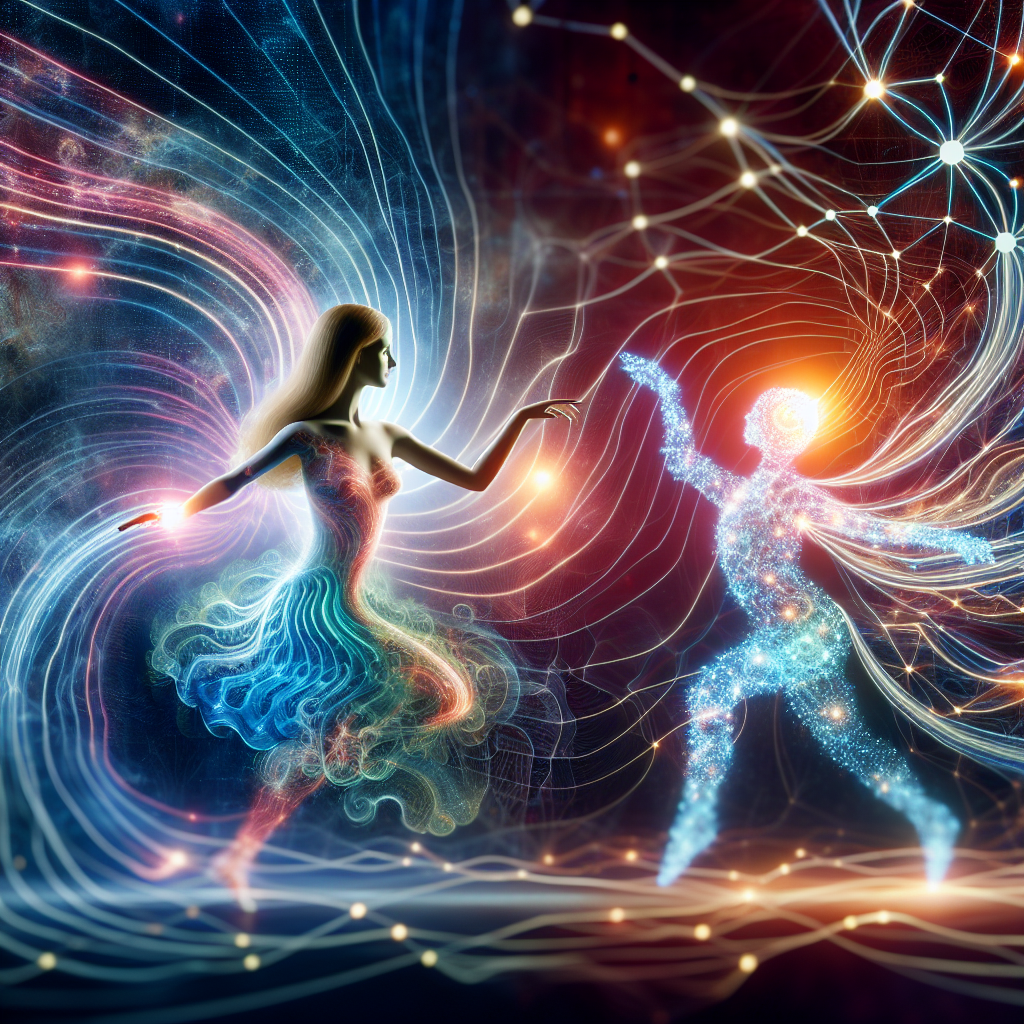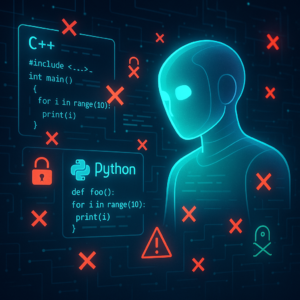Navigating the Dance of Human Minds and AI: Embracing “Generative Midtended Cognition”

Navigating the Dance of Human Minds and AI: Embracing “Generative Midtended Cognition”
Artificial intelligence has seamlessly integrated into our daily routines, offering convenience and transforming how we approach creative processes. Remember the last time you paused mid-sentence because the right word evaded you, only for your smartphone to complete your thought perfectly? Imagine that nudge coming from an AI that understands your creative quirks and assists your cognitive dance. This thought encapsulates the transformative phenomenon of “generative midtended cognition,” a concept pioneered by researchers Xabier E. Barandiaran and Marta Pérez-Verdugo. This blog delves into their insights, considering human-AI collaboration beyond boundaries, where machines become cognitive partners rather than mere tools.
Understanding Generative Midtended Cognition
Blending Minds with Machines
In essence, “generative midtended cognition” describes a unique synergy where AI actively contributes to our creative efforts without dominating them. Rather than seeing AI as external aids, this concept reimagines them as integrated partners in intentional and creative thought. The term “midtended” brilliantly captures the balancing act of combining individual human intentions with intricate AI inputs, propelling cognitive processes to new heights.
Here’s the twist: This is not about humans passively receiving suggestions from AI. It’s about an active, iterative dance where both parties—human and machine—contribute to crafting creative outcomes. Think of it as working with a colleague who constantly learns from you and adapts based on your interactions.
The Mechanics Behind Generative AI
Before we dive deeper, let’s demystify how generative AI achieves this interaction. At its heart, this technology relies on “transformer architectures” used in popular systems like ChatGPT. These systems dissect and analyze enormous datasets, learning patterns and structures to predict and generate outputs that compliment human intentions, be it in text, images, or music.
From Passive Tools to Cognitive Partners
Why Is This Shift Important?
Traditional cognitive theories focused on the human mind extend into the environment through static tools like notebooks or calculators—accessible but passive aids. However, Barandiaran and Pérez-Verdugo propose that generative AI introduces a dynamic shift by actively shaping thoughts and decisions in real-time, similar to social interactions among humans.
Example: Imagine writing a poem. In the past, you’d seek inspiration from a thesaurus or another poem. Today, generative AI can suggest words and structures based on your unique style, past works, and even your current mood, thus shifting the creative locus from “inside-the-head” operations to a tangible collaborative space with AI.
Creative Midtended Spaces
Let’s visualize this collaboration as a jazz band, where each member adjusts and responds to others, creating a cohesive melody. Just as musicians anticipate and react, AI does the same, predicting what you might need next and offering creative building blocks. This results in a fluid, adaptable creative process that might start with human input but evolves through multiple generative cycles, leading to unique results.
Generative AI can bridge the gap between imagination and execution, much like a co-writer who helps navigate writer’s block and adds unexpected twists to narratives.
The Human Touch: Midtention in Everyday Scenarios
Consider these scenarios: An AI assists a designer by suggesting color contrasts or shapes that compliment a given vision. A writer collaborates with an AI that offers storyline suggestions based on current events and personal style preferences. These aren’t fictional scenarios; they’re tangible examples of midtention already at play, weaving human creativity with machine precision.
Challenges and Opportunities with Generative AI
Potential Hurdles
While the benefits are enticing, the integration of AI raises vital considerations. One primary concern is authenticity. As AI suggests more of the creative content, how do creators ensure that the final product is a true reflection of their artistic spirit and not just an optimized pattern compiled by a machine?
Generative AI relies on massive databases, sometimes straddling an ethical line. When the dataset itself might have limitations or biases, we risk amplifying those issues in new creative works. Furthermore, if AI suggests solutions or content created by others in the dataset, where does originality sit?
Riding the AI Wave with Intention
On the flip side, the key lies in embracing the potential negatives creatively. Think of AI as a challenge rather than a crutch—spot where its suggestions limit genuine expression and use those moments as opportunities to break the mold and explore uncharted creative territories.
Recognizing generative AI’s capabilities to enhance our social interactions is crucial. From improving participatory democracy to facilitating smoother personal exchanges, its usage promises to extend beyond individual creativity into communal and political spheres. However, such applications call for vigilance against potential misuse, such as commodifying human intentions or enforcing undesirable biases.
Key Takeaways
-
Generative Midtended Cognition: This new cognitive framework combines human creativity with AI’s generative capabilities, creating a unique space where machines are partners rather than passive tools.
-
Complex Mechanics, Simple Outcomes: Generative AI techniques, such as those used in ChatGPT, learn and synthesize massive amounts of data, predicting and enhancing creative tasks.
-
Real-World Magic: The practical applications range from design and writing to enhancing social interactions and collective decision-making, offering personalized solutions tailored to individual styles.
-
Navigating Challenges: It’s essential to manage AI data biases actively and ensure AI-generated content reflects personal authenticity rather than optimized generality.
-
Future Implications: Embracing AI creatively—acknowledging suggestions and diverging when they don’t fit personal intentions—can propel authentic artistic expression, fostering a world where humans and AI think and create together.
Once a distant science fiction fantasy, the union of human agency and technological prowess in creative processes is unfolding in real-time. As we stand on the precipice of further integrating AI into our cognitive lives, understanding and managing this dynamic relationship will ensure a harmonious and prosperous co-evolution. This journey beckons us to see AI as not merely an automaton but a potential partner in the unfolding narrative of human creativity.
If you are looking to improve your prompting skills and haven’t already, check out our free Advanced Prompt Engineering course.
This blog post is based on the research article “Generative midtended cognition and Artificial Intelligence. Thinging with thinging things” by Authors: Xabier E. Barandiaran, Marta Pérez-Verdugo. You can find the original article here.




